Ob Sie Wein herstellen möchten, trockene Rosinen, frische Trauben essen oder Traubensaft trinken, Sie beginnen mit dem Anbau von Trauben.
Sicher, Tafeltrauben kann man auf dem Markt kaufen, aber wenn du genug platz hast, Warum sollten Sie nicht einfach Pflanzen haben, die jahrzehntelang süße Früchte liefern können? Viele Rebsorten produzieren Reben mit einer durchschnittlichen Lebensdauer von 50-100 Jahren.
In diesem Sinne, Lassen Sie uns den richtigen Weg durchgehen, um mit dem Anpflanzen dieser langlebigen Obstlieferanten zu beginnen. Wir werden über einige spezifische Sorten sprechen, und besprechen Sie die optimalen Wachstumsbedingungen.
Auch Sie können Ihre eigenen Weinreben für zukünftige Weinherstellungsbemühungen oder einfach nur für köstliche Früchte zum Naschen anlegen. Fangen wir jetzt an!
Gute Produkte bei Amazon für den Anbau von Trauben:


Es gibt Hunderte von essbaren Traubensorten auf der Welt. Eigentlich, Es gibt eine fantastische Liste von Trauben von UC Davis, die derzeit 594 Sorten mit 2345 verschiedenen individuellen Sorten umfasst – und das sind nur die populärer angebauten essbaren Sorten!
Gesamt, Zur Familie der Vitis gehören 79 Rebsorten, und nicht alle von ihnen liefern Früchte, die für den Menschen essbar sind.
Aber es gibt keine Möglichkeit, alle Sorten in einem Artikel abzudecken, Lassen Sie uns also ein paar verschiedene Kategorien erklären, in die die Trauben fallen.
Es gibt drei grundlegende Arten von Trauben:Amerikanische, Europäisch, und Hybriden.
Amerikanische Trauben stammen aus den Vereinigten Staaten. Es gibt eine Reihe verschiedener Arten von amerikanischen Trauben, die sich in Bezug auf ihre bevorzugte Umgebung unterscheiden. einige sind viel kälteresistenter als andere.
Eine der bekanntesten amerikanischen Trauben ist die Concord, das ist eine Sorte von Vitis labrusca (Fuchstraube). Es gibt auch viele andere Sorten oder Hybriden von Vitis labrusca.
Andere Arten der amerikanischen Traube sind Vitis riparia (Flussufertraube oder Frosttraube), Vitis aestivalis (Sommertraube oder Taubentraube), Vitis californica (Kalifornische wilde Traube), und Vitis rotundifolia (Muscadine-Traube).
Europäische Trauben haben ihren Ursprung im Mittelmeerraum, Europa, und Asien.
Von diesen, Vitis vinifera (Europäische Traube) ist die am häufigsten angebaute. Die meisten Weintrauben der Welt sind dieser Art oder sind Hybriden, die Vitis vinifera als Basis verwenden.
Hybridtrauben mischen normalerweise europäische und amerikanische Trauben, um Sorten mit besonderen Qualitäten zu erzeugen. wie eine europäische Weintraube, die wärmeres Klima verträgt oder trockenheitstolerant ist. Diese werden auch mit Resistenz gegen bestimmte Krankheiten oder Schädlinge entwickelt.
Neben Hybriden, Es ist mittlerweile üblich, einen Wurzelstock einer Sorte mit aufgepfropften Reben einer anderen Sorte zu verwenden. Dies ist besonders nützlich, wenn die Wurzeln einer Art durch bestimmte Schädlinge geschädigt werden. Zum Schutz der Reben wird ein anderer Wurzelstock gewählt.
Die Verwendung eines anderen Wurzelstocks aus der fruchttragenden Traube macht sie zwar nicht zu einer Hybride, es erfordert spezielle Fähigkeiten, die oft bei den Produzenten von Hybridtrauben oder in der Baumschulindustrie zu finden sind. Diese können sogar an die spezielle Kombination von Wurzel und Rebe angepasst werden.
Während alle Trauben in Herkunftsorte zerlegt werden können, sie sind oft nicht nach Standort getrennt, aber nach gebrauch.
Beim Anbau von Trauben, Es ist eine gute Idee, Ihre Sorte basierend darauf auszuwählen, wofür Sie die Früchte verwenden möchten. Verschiedene Sorten haben unterschiedliche Verwendungen, und während einige gute Crossover-Kandidaten sein können, das sind nicht alle!

Beispiele:Barbera, Cabernet Sauvignon, Chardonnay, Gewürztraminer, Grenache, Malbec, Merlot, Mourvedre, Kleiner Syrah, Pinot Gris (auch bekannt als Pinot Grigio), Primitivo, Riesling, Sangiovese, Tempranillo, Viognier, Zinfandel
Es gibt Hunderte von Weintraubenvariationen, die für alle Teile der Welt geeignet sind. Eigentlich, die gebräuchlichsten Namen für Keltertrauben stimmen mit den Weinen überein, die sie verwenden. Cabernet Sauvignon, Merlot, Kleiner Syrah, Muskat… das sind alle Arten von Weintrauben mit unverwechselbaren Aromen.
Es gibt Hunderte mehr, aber die von mir aufgeführten gehören zu den beliebtesten Weinsorten. Beachten Sie, dass dies keineswegs eine vollständige Liste ist!
Beispiele:Herbst ohne Samen, Schwarze Monukka, Catawba, Flamme kernlos, Goldener Muskat, Niagra, Perlette, Rotkugel, Rubinkernlos, Tokay
Dies sind süße und saftige Trauben, die wir alle gerne essen! Tafeltrauben sind direkt vom Weinstock zum Verzehr bereit. Süßer als viele Weintraubensorten, das sind Snacks oder Salataufsätze, Bietet einen beträchtlichen Kaliumschub, den viele andere Früchte nicht bieten können.
Viele Tafeltrauben wurden so angebaut, dass sie im Laufe der Zeit kernlos wurden. da sie leichter zu essen sind, wenn ihnen die holzigen und harten Samen fehlen.
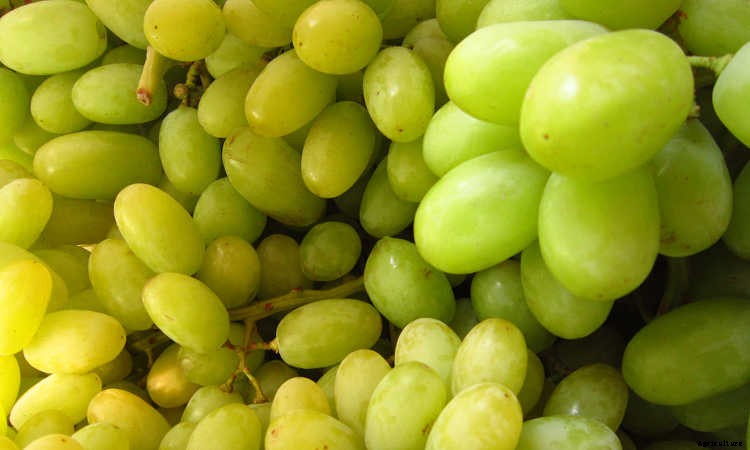
Beispiele: Thompsons Seedless, Fest, Zante Johannisbeere, DOVine, Maskat von Alexandria, Sultanin, Monukka, Perlette, Diamant Muskat, Interlaken
Was ist mit den Lagertrauben? Brunnen, getrocknete Trauben werden zu Rosinen, und diese beliebte kulinarische Zutat wird in allem verwendet, von Mahlzeiten bis hin zu Desserts, oder alleine gegessen. Einige Sorten eignen sich dafür besonders gut, da sie sehr gut am Rebstock trocknen.
Die Auswahl einer Rosinentraube erfordert die Auswahl einer Sorte mit einer sehr hohen Konzentration an Fruchtzucker, da dies dazu beiträgt, die zukünftige Traube nach dem Trocknen für Monate bis zu einem Jahr zu konservieren.
Beispiele:Schwarzes Spanisch, Glockenblume, Eintracht, Fredonia, Ives, Lomanto, Niabbel, Rogers Rot, Rubired, Sonnengürtel
Wenn Sie etwas suchen, das als Saft oder Konserve aufbewahrt werden kann, Auch dafür gibt es Sorten. Es gibt zwar viele Sorten, die sich für diese Zwecke eignen (sogar die Weintrauben können köstliche Gelees mit einem Hauch von Weingeschmack herstellen), Dies sind bemerkenswerte Entscheidungen.
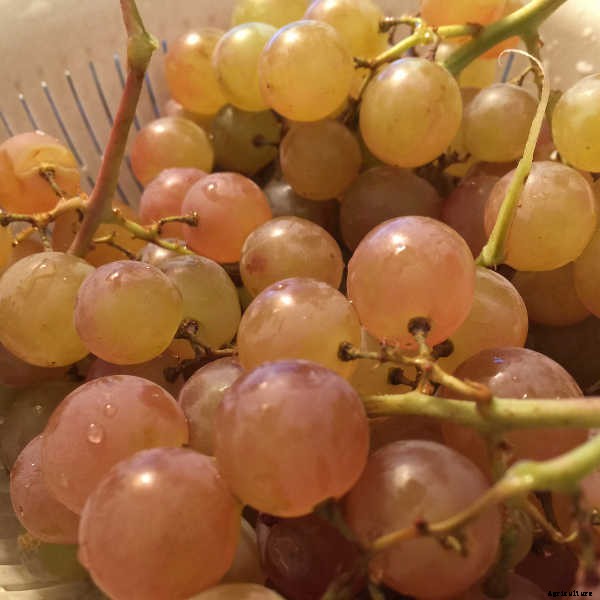
Beispiele:Thompsons Seedless, Eintracht, Schwarzes Spanisch, Maskat von Alexandria, Tempranillo, Flamme kernlos
Es gibt einige Trauben, wie Thompsons Seedless, die zur Herstellung von konzentriertem Saft verwendet werden, frischer Saft, Rosinen, Tafeltrauben, und sogar Wein. Es gibt jetzt ungefähr neun verschiedene Sorten von Thompsons! Es ist sehr beliebt, vor allem für den Einzelhandel.
Concords werden für Saft verwendet, aber auch für Marmeladen, Gelees, Wein, und in Dosentrauben wie in Obstsalat. Schwarzes Spanisch kann zu Weinen verarbeitet werden, Säfte, oder frisch gegessen. Und es gibt noch viele weitere Crossover-Trauben, darunter eine Reihe von beliebten Weintrauben wie Tempranillo.
Wenn Sie ein Amateur im Weinanbau sind, es ist wahrscheinlich, dass Sie sich für eine Traube entscheiden möchten, die eine Vielzahl von Verwendungsmöglichkeiten hat, wie Thompsons kernlose oder Concords. Flamme kernlos ist eine weitere beliebte Wahl für Trauben und Rosinen für Anfänger.
Lassen Sie uns einige der frühen Stadien des Traubenanbaus durchgehen. Dieser Prozess erfordert viel Vorbereitung im Voraus, Vielleicht möchten Sie also in den Herbstmonaten mit der Planung und Vorbereitung für die Frühjahrspflanzung beginnen!

Die Traubenplanung ist ein langfristiger Prozess, aber die tatsächliche Zeit, um vorhandene wurzelnackte oder eingetopfte Trauben zu pflanzen, wäre in den frühen Frühlingsmonaten.
Sie sollten einen Tag so früh wie möglich nach Ende der Frostgefahr pflücken. Im Idealfall, Ihr Standort wird bereits im Voraus vorbereitet, so dass Sie die Trauben einfach in die Erde holen und in Schwung bringen können.
Wenn Sie mit dem Samen beginnen möchten, dieser Prozess beginnt viel früher. Sie müssen Ihre Samen stratifizieren, damit sie keimen. Um dies zu tun, die zu pflanzenden Samen in ein Bett aus feuchtem Torfmoos legen, feuchte Papiertücher, oder angefeuchteten Sand und legen Sie sie für 3 Monate in den Kühlschrank.
Nachdem sie 3 Monate 35-40 Grad Temperaturen durchgemacht haben, Sie können Ihre Samen in kleine Töpfe pflanzen. Halten Sie eine Bodentemperatur von 70 Grad ein, um die Keimung zu induzieren, und halten Sie die Erde leicht angefeuchtet.
Die Keimung kann zwischen 2-8 Wochen dauern, und sobald Ihre Pflanzen eine Höhe von 3 Zoll erreichen, Transplantieren Sie sie in mindestens einen 4-Zoll-Topf. Bewahren Sie sie unter Gewächshausbedingungen auf, bis sie einen Fuß groß sind. härten Sie sie dann für die Transplantation im Freien aus.
Insgesamt, Sie müssen in den Herbstmonaten mit der Stratifizierung der Traubenkerne beginnen. pflanze sie im Winter, und lassen Sie sie so früh wie möglich im Frühjahr aushärten. Bereiten Sie sich also rechtzeitig auf Ihre zukünftigen Reben vor!
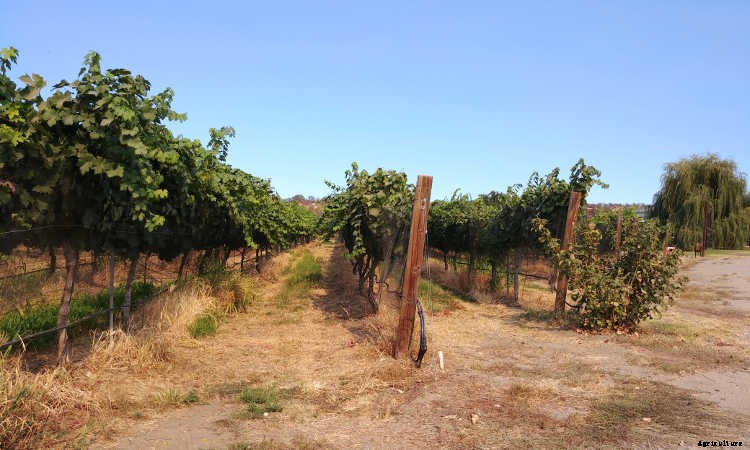
Wie dein Weinreben können fünfzig bis hundert Jahre alt werden , Sie müssen einen Ort auswählen, an dem diese auf unbestimmte Zeit verbleiben können. Dies sind vollsonnige Pflanzen, Daher ist die Auswahl des richtigen Standorts unerlässlich.
Bewohner der nördlichen Hemisphäre wie ich sollten einen nach Süden ausgerichteten Standort anstreben, an dem sie das ganze Jahr über konstant Sonne bekommen. Für Bewohner der südlichen Hemisphäre, Entscheiden Sie sich für nach Norden ausgerichtete Standorte.
Ihr Standort muss im Voraus mit einer Unterstützung vorbereitet werden. Sie können ein Spalier verwenden, eine Laube, oder eine beliebige Anzahl anderer Arten von Stützstrukturen, aber es muss da sein, wenn du deinen Weinstock pflanzt.
Je nach Sorte, Sie benötigen mindestens 6 Fuß Platz zwischen den Pflanzen. Manche Sorten verlangen sogar noch mehr. Dies bietet viel Platz für die tiefen Wurzeln, um sich auszubreiten.
Entscheiden Sie sich für den Containeranbau? Wenn ja, Ihr Behälter muss mindestens ein 15-Gallonen-Behälter sein. Vermeiden Sie dunkle Behälter, die sich bei direkter Sonneneinstrahlung aufheizen, oder wenn Sie diese verwenden müssen, Stellen Sie sicher, dass der Behälter selbst im Schatten bleibt. Diese benötigen noch eine Stützstruktur.
Zwergarten eignen sich am besten für den Containeranbau, aber selbst sie benötigen eine Form von Spalier, um zu klettern, Planen Sie also im Voraus und stellen Sie sicher, dass Ihre Stützen extrem stabil sind. Die Reben werden buchstäblich um sie herum wachsen, wodurch die Unterstützung schwer zu ersetzen ist.
Ich empfehle persönlich, sich für Metallpfosten mit schweren Metalldrähten zu entscheiden, um Ihr Spalier zu bilden. aber es gibt noch viele andere Methoden. Denken Sie daran, dass es so lange halten muss wie Ihre Reben!
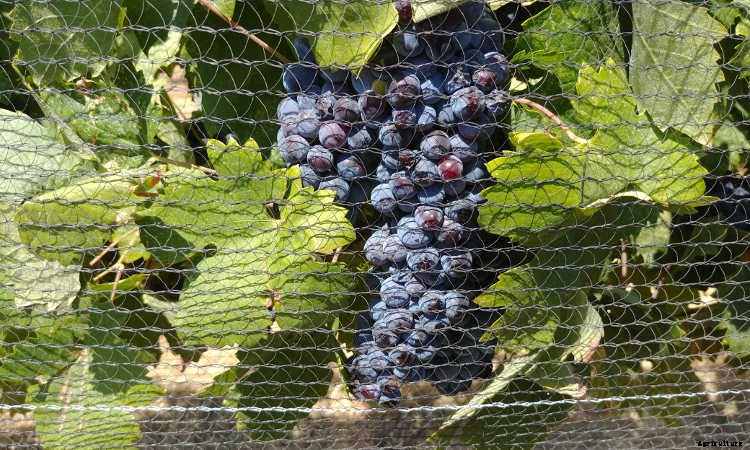
Wurzelnackte Trauben sollten vor dem Pflanzen mindestens 2 Stunden in Wasser eingeweicht werden. Eingemachte Trauben sollten am Vortag gut gewässert werden, um den Transplantationsschock zu reduzieren.
Beginnen Sie damit, ein Loch zu graben, das mindestens einen Fuß breit und tief ist. Fügen Sie dem Boden des Lochs vier Zoll guten Mutterboden hinzu, Untersuche dann die Wurzeln deiner Pflanze. Schneiden Sie alle ab, die gebrochen oder beschädigt sind.
Setzen Sie Ihre Rebe etwas tiefer in die Erde ein als in der Gärtnerei, Füllen Sie dann 6 Zoll Erde in das Loch. Stampf das fest, Fügen Sie dann die restliche Erde hinzu, um das Loch zu füllen, ohne es zu stopfen.
Sobald deine Rebe im Boden ist, Schneiden Sie die Spitze auf einige Knospen zurück (2-3 optimal, aber mehr, wenn es älter ist) und gut eingießen.
Es gibt einen sehr ausgeprägten Wachstumszyklus, den die Trauben jedes Jahr durchlaufen. Lassen Sie uns die verschiedenen Wachstumsstadien in begrenzter Form durchgehen, um Ihnen einen Hinweis darauf zu geben, was Sie jährlich von Ihren Reben erwarten können.

Im zeitigen Frühjahr, wenn die Rebe aus der Ruhe kommt, es beginnt mit dem „Ausbluten“ von Reben, die in den Wintermonaten beschnitten wurden. Wenn sich der Boden erwärmt, Wasser sickert aus den Stellen, an denen der Stock geschnitten wurde. Eine Rebe kann bis zu fast anderthalb Gallonen Wasser „bluten“.
Sobald die „Blutung“ aufhört, die Pflanze wird sich auf neue Knospen konzentrieren. Winzige Knospenstandorte, die sich vor der Ruhephase entwickelt haben, beginnen zu schwellen und bilden langsam neue Triebe. Es kann bis zu einem Monat dauern, bis diese neuen Triebe Blätter bilden und ernsthaftes Wachstum beginnen.
Wenn die Triebe beginnen, schnell zu wachsen, Sie können pro Tag bis zu einem Zoll lang werden, und die Pflanze wird schnell beginnen, neue Blätter entlang ihrer Rebe zu bilden. Besteht während des Austriebs noch Frostgefahr, Diese jungen Knospen und Triebe sind gefährdet und sollten vor Kälte geschützt werden.

Sobald die Temperatur konstant zwischen 59-68 Grad liegt (normalerweise 40-80 Tage nach dem Knospenbruch), es kommt zur Blüte. Anfänglich, dies erscheint als knopfartiges Wachstum an den Spitzen neuer Triebe. Innerhalb weniger Wochen, diese frühen Büschel entwickeln sich zu größeren Blütenbüscheln.
Während der Blütephase findet die Bestäubung statt. Während die meisten kommerziell angebauten Weinreben selbstbestäubend sind, Wilde sind es nicht und benötigen Insekten, um die Blüten zu bestäuben. Zusätzlich, dieses Stadium ist, wenn die Befruchtung und der Samensatz auftritt, kleine Punkte bilden, die zu Samen werden.
Starke Regenfälle oder Wind während dieser Zeit können zu einem Problem werden, denn die Düngung ist die Ursache für die zukünftige Fruchtbildung und Regen oder Wind können die Düngung verhindern. Zusätzlich, Niedrige Luftfeuchtigkeit, hohe Temperaturen, oder Trockenheit kann zu einer Verringerung der Düngung führen.
Auch in dieser Phase beginnen sich junge Knospen zu bilden, die das neue Wachstum des nächsten Jahres werden. Sie werden zunächst subtil und klein sein, wenig mehr als eine Beule am Gelenk früherer Triebe.

Wenn die Blüte nachlässt, Fruchtansatz beginnt fast sofort. Befruchtete Blüten bilden kleine grüne Beeren, in denen sich die Samen schließlich vollständig entwickeln. In dieser Phase kann der zukünftige Ertrag der Kultur abgeschätzt werden.
Verschiedene Rebsorten haben eine unterschiedliche durchschnittliche Düngung, aber typischerweise werden zwischen 30-60% der Blüten befruchtet. Je höher die Anzahl der Blüten, die während der Blütephase befruchtet wurden, desto mehr Früchte werden Ihre Reben schließlich liefern.
Blumen, die während der Blütephase nicht bestäubt und befruchtet wurden, vertrocknen und fallen während des Fruchtansatzes ab.
Als Fruchtansatz endet, die letztendliche Frucht wird grün und fühlt sich hart an. Es ist zu diesem Zeitpunkt ungenießbar, da es unreif ist.
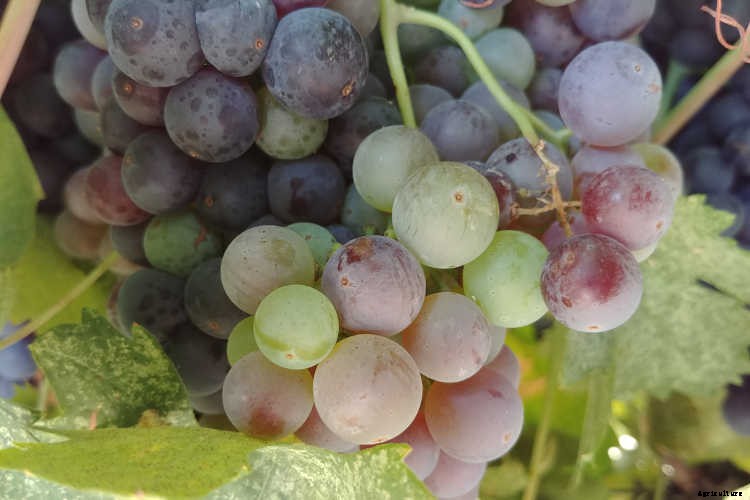
Veraizon ist die Phase, in der die jungen Traubenbeeren zu reifen beginnen. Anfänglich, die Trauben werden auf etwa die Hälfte ihrer zukünftigen Größe anschwellen. Die Farbe der Trauben ändert sich je nach Sorte, Nimm das Rot auf, Schwarz, oder gelbgrüne Farbtöne, die wir mit reifen Früchten assoziieren.
Diese jungen Früchte quellen nach dem Farbwechsel weiter auf, und innerhalb von 6-8 Tagen nach dem Beginn der Veraizon auf einer bestimmten Traube beginnt sie dramatisch zu wachsen. Die Frucht beginnt zu erweichen, und die Reben beginnen ihre grüne Farbe zu verlieren und beginnen braun und holzig zu werden.
Nicht alle Früchte gehen gleichzeitig in Veraizon ein. Eigentlich, Früchte, die direkter Sonneneinstrahlung stärker ausgesetzt sind, gelangen normalerweise zuerst in Veraizon. Früchte, die abgeschattet wurden, neigen zu einer späteren Veraizon-Periode. Dies kann die Ernte verlängern.
Die Bestimmung der Reife hängt wirklich von der Sorte und äußeren Faktoren wie Krankheit, Die Ernte erfolgt jedoch im Allgemeinen am Ende der Veraizon, wenn die Trauben ihre optimale Größe haben und sich der Zucker in der Frucht konzentriert hat.
Der Reifegrad ist sehr subjektiv abhängig vom Verwendungszweck der Frucht. Für Winzer, es kann ein gewisses Maß an Tanninen sein, das sie für zukünftige Weine wünschen. Für Tafelobst oder Rosinen, es ist, wenn der Geschmack seinen Höhepunkt erreicht, machen die Früchte süß und lecker.
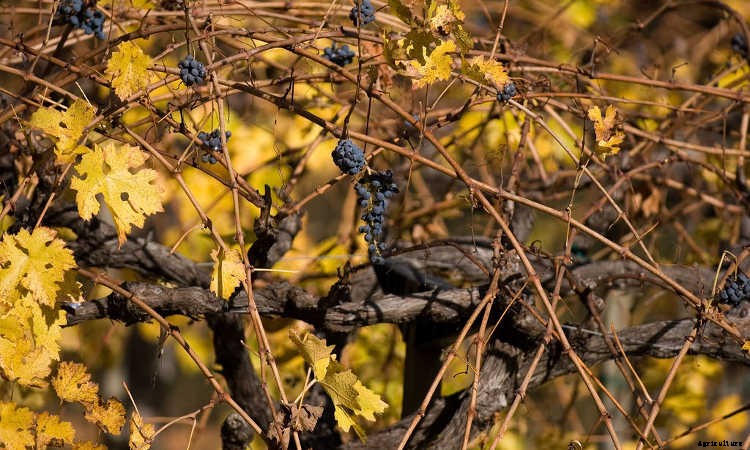
Nach der Ernte, die ungeschnittenen Reben werden weiterhin härter und holziger. Die Blätter setzen ihren Photosyntheseprozess fort, aber die Pflanze speichert jetzt Kohlenhydrate in den Wurzeln der Pflanze, um sie während der Winterruhe zu erhalten.
Im Laufe der Zeit, die Blätter werden gelb und braun, und sie werden schließlich ganz abfallen, die nackten Stöcke über die Wintermonate ausgesetzt lassen. Dadurch bleiben auch die Knospen, die sich gebildet haben, den Elementen ausgesetzt, aber für die Ruhe sollten sie gebräunt und fest geworden sein.
Wenn die letzten Blätter fallen, die pflanze tritt für die kältesten monate des jahres in ihre ruhephase ein. Sie bleibt träge und ohne äußere Lebenszeichen bis zum Frühjahr, wenn der Knospenbruch von neuem beginnt.
Während beim Weinanbau ein wenig Finesse gefragt ist, Es gibt einige einfache Grundlagen, die Ihnen hochwertiges Obst für Ihren Tisch einbringen. Von hier, wir erforschen die rudimentären Grundlagen, zusammen mit ein paar Tipps, um Ihre Früchte auf die nächste Stufe zu bringen.
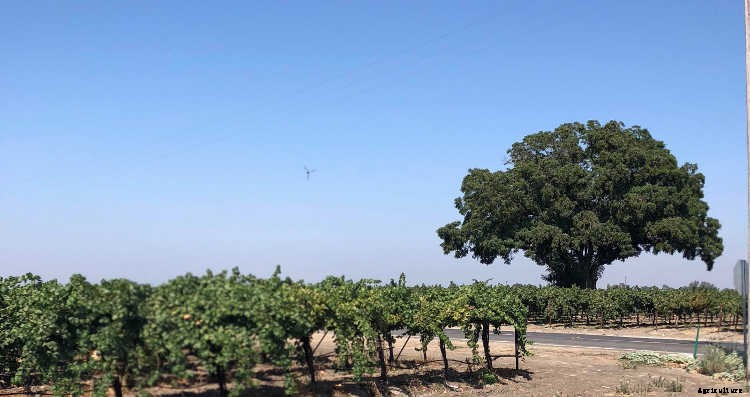
Als absolutes Minimum, Sie müssen sicherstellen, dass Ihre Trauben sechs bis acht Stunden volle Sonne pro Tag bekommen. Zu wenig Licht führt zu einer Vielzahl von Problemen, einschließlich Mehltau, geringere Fruchtproduktion, und geringere Fruchtqualität.
Es kann für uns unmöglich sein, das Wetter zu kontrollieren, aber sobald der Knospenbruch beginnt, Es ist wichtig, dass wir sicherstellen, dass die Pflanzen die besten Bedingungen haben, die wir ihnen bieten können. Es ist die beste Wahl, sie an einem Ort zu positionieren, an dem sie ständig Sonne haben.

Trauben können überall dort wachsen, wo es kühle Winter und warme Sommer gibt. Jedoch, Sie scheinen am besten in Gegenden zu funktionieren, in denen es kühl, aber nicht extrem kalt ist. Dies ist einer der Gründe, warum das Napa Valley in Kalifornien für seine Weinernten bekannt ist.
Gesamt, die besten Wachstumsbedingungen scheinen zwischen den Zonen 6-8 in den Vereinigten Staaten zu liegen, oder vergleichbare Klimazonen anderswo. Sie benötigen etwa 150-170 Tage im Jahr Temperaturen über 50 Grad, um neues Wachstum zu bilden und Früchte zu entwickeln.
Zusätzlich, bei weniger als 50 Grad, Das Stoffwechselsystem der Rebe beginnt sich zu schließen, um sich auf die Ruhephase vorzubereiten. Zur Pflanze, es scheint, dass der Winter naht und es beginnt, sich auf seine Ruhephase vorzubereiten.
Auch die Wintertemperaturen sind wichtig. Kühlere Temperaturen von oder unter 50 Grad für 2-3 Monate im Jahr sind wichtig. 40 Grad ist der optimale Bereich.
Einige Rebsorten sind winterharter als andere. Es gibt viele Sorten, die an schneereiche Winter gewöhnt sind, in der Tat. Einige Arten von amerikanischen Trauben sind winterhart bis -20, und eine Reihe von Hybriden sind gut bis -15. Europäische Trauben sind oft fein bis 5 Grad Temperaturen.

Die Bestimmung der richtigen Wassermenge für den Weinanbau kann schwierig sein. Dein Boden sollte feucht sein, aber nicht matschig, denn Trauben können schnell Krankheiten entwickeln, wenn es zu nass ist.
Während Trauben etwas trockenheitstolerant sind, Sie produzieren normalerweise weniger Früchte, wenn sie unter Wasserstressbedingungen stehen. Es ist wichtig, sicherzustellen, dass sie die richtige Menge an Wasser haben, wenn Sie eine gute Fruchtproduktion wünschen.
Die meisten kommerziellen Züchter entscheiden sich für Tröpfchenbewässerungssysteme, um direkt in die Wurzelmasse an der Basis der Pflanze zu gießen. Mulchen um die Pflanzen herum, um die Feuchtigkeit zu erhalten, kann ebenfalls hilfreich sein. vor allem während der Hitze der Sommermonate. Mulch reduziert auch die Unkrautentwicklung.
Im ersten Jahr, eine gute Faustregel ist, mindestens einmal pro Woche zu gießen, bis die Erde um die Wurzeln der Pflanze 6″-10″ tief feucht ist. In den Folgejahren, einmal pro Woche gießen, bis sie 12″ unter der Erdoberfläche feucht ist. Stellen Sie zusätzliches Wasser bereit, wenn das Wetter besonders heiß ist.
Es wird auch eine Tropfbewässerung empfohlen, um das Wasser von den Blättern fernzuhalten. da überschüssige Feuchtigkeit auf den Blättern Pilzkrankheiten fördert. Wenn Sie mit der Hand gießen müssen, Versuchen Sie zu vermeiden, die Blätter zu besprühen, und früh morgens gießen, damit überschüssige Feuchtigkeit in der Sonne verdunsten kann.
Es kann hilfreich sein, den Boden mit einer Sonde zu testen, um die Feuchtigkeit zu überprüfen. Jedoch, Sie können es auch buchstäblich von Hand überprüfen.
Verwenden Sie eine Kelle und ziehen Sie die Erde zurück, bis Sie ein paar Zentimeter unter die Erdoberfläche gelangen. Schöpfe eine Handvoll Erde aus und drücke sie zu einer Kugel. Wenn die Erde zusammenklebt und sich Ihre Hand kühl anfühlt, Deine Reben bekommen genug Wasser.
Wenn die Erde nicht zusammenklebt und zerbröckelt, und Sie spüren nicht die Wirkung der Verdunstungsfeuchtigkeitskühlung auf Ihrer Haut, gieße deine Reben.

Trauben benötigen einen gut durchlässigen Boden. Der Boden muss genügend Feuchtigkeit halten (siehe Abschnitt „Bewässerung“ oben), um die Reben glücklich zu machen. aber zu viel Wasser und Sie werden Probleme haben.
Jedoch, Weinreben sind tolerant gegenüber einer Vielzahl von Bodenarten. Kalk- oder tonreiche Böden, sandige oder schlammige Böden können den Geschmack Ihrer späteren Früchte verändern. Das ist bei vielen Winzern eigentlich erwünscht, da sie bestimmte Aromen nur mit ihrem Boden erreichen können.
Das gleiche gilt für Heimwerker, jedoch. Ihr Boden wird Trauben hervorbringen, die anders schmecken als solche, die unter anderen Bodenbedingungen angebaut werden. und Ihre eventuelle Frucht ist möglicherweise nicht mit Trauben von irgendwo anders identisch!
Schlechtere Böden produzieren kleinere Trauben. Für Winzer, dies wird tatsächlich bevorzugt, da die kleineren Trauben ein größeres Verhältnis von Schale zu Saft haben. und die Haut sorgt für Geschmack. Für Tafeltrauben, Sie werden einen reicheren Boden wünschen, um den Reben reichlich Nährstoffe zu bieten.
Ich empfehle dringend, wenn Sie tonähnliche Böden haben, Sie arbeiten viel Kompost in Ihren Boden, bevor Sie ihn pflanzen. Verwenden Sie mindestens 2″ Kompost über bis zu 10 Fuß, wo die Pflanze wächst. und arbeiten Sie es mindestens einen Fuß nach unten. Dies hilft dem Boden zu entwässern und fügt Nährstoffe hinzu.
Die pH-Anforderungen für Trauben variieren von Sorte zu Sorte und können auch von Ihren örtlichen Bedingungen beeinflusst werden. Ein guter Ausgangswert ist ein Ziel von 5,5-6,0 für wild lebende oder lokale einheimische Arten. 6.0-6.5 für Hybriden, und 6,5-7,0 für Vitis vinifera-Sorten. Jedoch, Überprüfen Sie die Bedürfnisse Ihrer Sorte.
Für Containerzüchter, Sie können sich für eine leichte Vergussmischung entscheiden. Wenn Sie lokale Erde einmischen möchten, geh auf jeden fall drauf. Achten Sie nur darauf, dass die überschüssige Feuchtigkeit leicht abfließt, um nasse Wurzeln zu vermeiden.
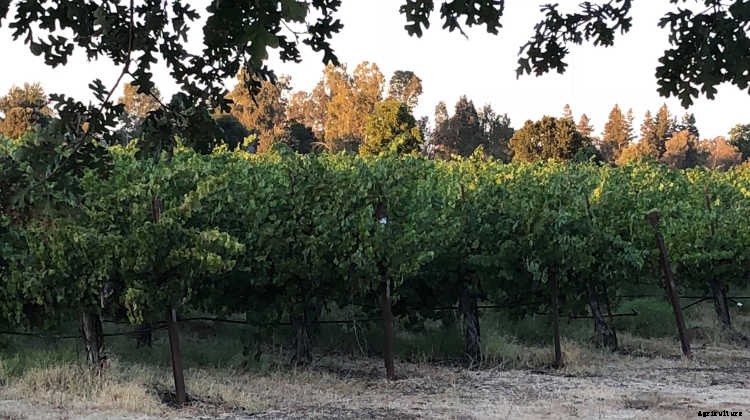
Wenn Sie keinen schlechten Boden haben, im ersten jahr solltest du gar nicht düngen. Alle Änderungen, die Sie vor dem Pflanzen vorgenommen haben, plus die natürliche Qualität des Bodens selbst, sollte reichen.
Im zweiten und in den Folgejahren Top-Dressing an der Basis Ihrer Pflanze entweder mit Kompost oder gealtertem Dünger. Sie können auch während der Vegetationsperiode bis zu zweimal leicht mit einem 10-10-10-Dünger düngen. aber Trauben mögen es normalerweise nicht, stark gedüngt zu werden.
Ich persönlich finde, dass ein Top-Dressing im Frühjahr mit einer dicken Schicht Kompost oder gealtertem Mist die bessere Wahl ist. Viele Weingüter scheinen dem zuzustimmen, als einer der beliebtesten Düngemittel für den Weinbau ist eine Mischung aus gealtertem Mist und Wurmkompost.

Generell, Jeder starke Schnitt sollte im späten Winter oder sehr frühen Frühling erfolgen, während die Rebe noch ruht, um Schäden zu vermeiden. Möglicherweise ist ein zusätzlicher leichter Schnitt erforderlich, aber nur unter bestimmten Umständen. Verwenden Sie immer sterilisierte Werkzeuge.
Die meisten Beschneidungen werden mit einer guten Gartenschere durchgeführt. Bei schwererem Holz ist jedoch möglicherweise eine Astschere oder eine Bogensäge oder eine Astsäge erforderlich.
Die ersten Jahre des Beschneidens und Trainierens sind die komplexesten. Wenn Ihre Reben fünf Jahre oder älter sind, Pflegeschnitt erforderlich ist, aber weniger Training ist notwendig. Hier ist ein guter Überblick über ein sehr grundlegendes Cordon (T-förmiges) Trainings- und Beschneidungsprogramm.
Erstes Jahr: Das Ziel in diesem Jahr ist es, das Wurzelsystem zu entwickeln und zu stärken. Entfernen Sie alle Blüten, die sich am Stamm entwickeln, um die Pflanze auf diese Wurzelentwicklung zu konzentrieren. Schneiden Sie alle Reben ab, mit Ausnahme derer, die Sie in Zukunft hart wachsen lassen möchten.
Es ist am besten, 1-3 der kräftigsten Reben auszuwählen, um sie zu halten. Für dieses erste Jahr das Ziel ist es, sich auf den Stamm zu konzentrieren und diese tiefe Wurzelentwicklung zu fördern, Während Sie also diese kräftigen Reben pflegen möchten, Mach dir noch keine Sorgen um das Training.
Zweites Jahr: In diesem Jahr, Sie möchten dennoch, dass sich Ihre Wurzeln weiter entwickeln, damit sie tief unter die Bodenoberfläche reichen. Entferne die Blumen, und schneide alle Knospen oder Triebe ab, die unter den Reben erscheinen, die du im Vorjahr gehalten hast.
Befestigen Sie die alten Reben des letzten Jahres lose an Ihrem Spalier in der gewünschten Konfiguration, wenn sie die richtige Höhe erreichen. Diese werden nun zu „Kordons“, oder eine horizontale Verlängerung des Rumpfes, und wird zu einem festen Bestandteil. Schneiden Sie überschüssige Triebe ab, die sich am Stamm bilden.
Während Sie dieses Jahr einige frische Triebe an den Kordons behalten möchten, um für das nächste Jahr ein Jahr altes Fruchtholz zu werden, Sie möchten auch sicherstellen, dass genügend Luftstrom vorhanden ist, um Pilzprobleme zu vermeiden. Schneiden Sie überschüssiges Material ab, um einen guten Luftstrom und das Eindringen von Sonnenlicht zu ermöglichen.
Drittes Jahr: Lassen Sie einige Blüten sich entwickeln und durch die Blüte hindurch bis zum Fruchtansatz auf dem Fruchtholz, das sich im Jahr 2 entwickelt hat. Beschneiden Sie weiterhin alle Knospen oder Triebe, die unter den Kordons oder entlang des Stammes wachsen. Lassen Sie neue Reben aus den Kordons wachsen.
Beim diesjährigen Winterschnitt Entfernen Sie alle zweijährigen Fruchthölzer von den Kordons, nur das Holz des dritten Jahres behalten. Lassen Sie zwei Knoten mit Knospen auf dem älteren Holz, damit es in Zukunft neues Wachstum entwickeln kann.
Viertes Jahr: Dieses Jahr, Sie können alle Blumen entwickeln lassen, wenn Sie möchten. Das Wurzelsystem sollte nun gut etabliert und tief sein. Schneiden Sie weiterhin Knospen oder Triebe ab, die sich entlang des Stammes oder unter den Kordons bilden.
Ab diesem Jahr, Sie werden die Stöcke des Vorjahres abschneiden, während die Pflanze ruht (die Erneuerungsknoten behalten) und die jüngeren Stöcke behalten, um ab dem Frühjahr Früchte zu produzieren.
Dieser jährliche Kompromiss (Entfernen der ältesten Stöcke und Zurücklassen der jüngeren Stöcke) stellt sicher, dass Sie immer ein Jahr altes Fruchtholz für die Frucht des nächsten Jahres haben. hält aber viel Luftstrom aufrecht, um Krankheiten vorzubeugen.

Während ich oben im Abschnitt „Trauben anbauen“ kurz darauf eingegangen bin, wie man Trauben aus Samen pflanzt, Es gibt zwei grundlegende Vermehrungsformen:aus Samen oder aus ruhenden Holzstecklingen.
Neue grüne Triebe sind nicht die besten Stecklinge. Sie wollen ein Jahr altes Wachstum für diesen Prozess, und du willst dich vermehren, nachdem die Reben ruhen, normalerweise im Spätherbst, wenn die Pflanze ihre Blätter verloren hat.
Wählen Sie einen einjährigen Stock, der etwa den Durchmesser eines Bleistifts hat und etwa 1,80 m lang ist. Belassen Sie einen Knoten auf der Anlage, Schneiden Sie den Stock mit einer Gartenschere ab. Von diesem Schnittpunkt aus, zähle vier Knospen hoch, zwischen 12-18″ Länge, und einen weiteren Schnitt machen.
Tauchen Sie das untere Ende in Bewurzelungshormon (achten Sie darauf, dass Sie nicht den Überblick verloren haben, welches das untere Ende ist!), und mit drei der Knospen unter der Erde in die Erde pflanzen. Stellen Sie sicher, dass sich das vierte am oberen Ende über der Erdoberfläche befindet.
In den darauffolgenden Wintermonaten Dieser einjährige Rohrschnitt wird über seiner freigelegten Schnittfläche verhornen und einige kleine Wurzeln entwickeln. Nicht alle Stecklinge überleben den Winter, Stellen Sie also sicher, dass Sie mehr vorbereiten, als Sie benötigen.
Im Frühjahr, diejenigen, die überlebt haben, werden beginnen, neues Wachstum zu entwickeln. Wenn Sie sie in einen tiefen Topf gepflanzt haben, Sie können sie an dieser Stelle verpflanzen. Diejenigen, die direkt in den Boden gepflanzt werden, sollten wie neue Weinreben behandelt werden.
Ausgefallene Reben, die bis Ende des Frühjahrs keinen Neuaustrieb ausbilden, können entsorgt werden.

Transplanting is identical to planting a bare-root grapevine. Remove it from its pot, checking the roots to make sure they’re intact and in good shape. If it’s rootbound, loosen the roots somewhat so that they can spread naturally.
Plant in well-draining, pre-prepared soil slightly deeper than it was originally planted (about 1/4″ to 1/2″ deeper). Backfill some of the dirt and pack it down firmly, then fill the rest of the hole with loose soil without heavy packing. Water it in well.
If you’re transplanting an older grape vine that’s attached to a trellis, this can be a very complicated process if not impossible. I recommend trying to avoid transplanting older vines whenever possible by starting them in a 15″ or larger pot so you don’t have to transplant them again.
The harvest is when the skill of the grower really comes into full play. Determining when your grapes are ready to be harvested is complex, and there are different ways to harvest for different future uses. Let’s go over the basics here so you have an indication of how to begin!

If you’re planning on making raisins from your grapes, skip ahead to the “making raisins” segment below. But for all other uses, the harvesting process is similar.
As grapes come out of veraizon, their sugars will have developed somewhat. But deciding when the perfect time to harvest will be is highly subjective, and it’s a very short window. You want to harvest when the flavor is best, the grapes are full of juice, and the sugars are high.
Picking that time boils down to a few specific attributes, obwohl, and only you can decide which of these is of primary importance to you.
Taste: Every variety of grapes has a specific taste. It’s really good if you know what your specific grapes are supposed to taste like, but the goal here is to harvest when they are at their sweetest and before they begin to lose their plump juiciness. Pick from a few clusters and taste them!
Plumpness: Take time to feel the grapes with your hands. They should feel as though they’re full of juice, but not hard (which would be before the end of veraizon) or starting to wrinkle (which is after their peak).
Visual Test: Your grapes should be uniform in color on each bunch rather than a mixture of colors. If the colors are mixed, that bunch is still undergoing veraizon and should not be harvested yet. Jedoch, color isn’t everything. It can take 1-3 weeks for sugars to form post-veraizon!
Another visual test is to examine the seeds inside the grape and check their color. The seeds should be uniformly brown, not tan or white.
Watch The Wildlife: If the birds are starting to greedily consume your grapes, it’s a sign of two things. One of those things is that you need to put bird netting up before they eat your entire harvest. The other is that your grapes are probably ready to eat, because the birds can tell!

The actual harvesting process itself is surprisingly easy. Simply take a cluster of grapes in your hand, find the stem at the top, and snip it cleanly off with sharp pruning shears or scissors.
If you’re concerned about spreading disease, sterilize your pruners between cuts. Jedoch, as the plant’s going to be going dormant soon and likely will be pruned in the late winter, disease spread during harvesting is fairly uncommon.
For raisins, you want to start by being sure that they are ripe as described above. But at that point, you want to prevent the plant from taking back any of the moisture that’s in the grapes, as that can reduce the sugar content of your finished raisins.
Um dies zu verhindern, you will need to cut through the one-year canes that are producing fruit as if you were pruning the canes, but leave them hanging in their current place. You can secure the cut canes to your trellis with plastic ties to support the fruit’s weight if necessary.
Allow the fruit to dry on the canes. The sun will cause the moisture in the grapes to slowly reduce, drying them out gradually without losing any of those essential fruit sugars. During this time period, avoid any moisture getting onto the leaves or fruit so damage can’t occur.
The leaves will dry out and fall off, exposing the fruit to full sun conditions and aiding in the drying process. Once the raisins are shriveled and leathery, just like storebought raisins, you can cut the clusters off and strip the raisins from the clusters.
Falls benötigt, you can spread your raisins out to dry further on fine mesh trays which allow air to reach all sides of the fruit. Jedoch, the longer you can leave your fruit exposed to the sunlight on the vine, the better it will taste!

As with so many other types of produce, moisture is the enemy when storing grapes. Any moisture can cause your grapes to develop mold or other issues, shortening their shelf life.
Zusätzlich, taking grapes off their stem leaves an open spot at the stem end where bacteria can enter the fruit, breaking it down more quickly. That’s why single grapes seem to spoil so fast!
The best way to store your grapes is to place them in a ventilated plastic or mesh bag lined with paper towels to absorb any moisture. Keep them on the stem, and do not rinse them off before storing them. Be sure you remove any which are past their prime before storing.
Grapes stored in this fashion can last for 2-3 weeks, but you’ll still want to check on them. Und, selbstverständlich, the faster you eat them, the better they will be.
Ebenfalls, one thing to remember:grape leaves themselves can be quite useful, and are often used in pickling or as part of Greek cuisine. Selecting healthy, lush grape leaves from your garden to use in Mediterranean recipes is an added perk!
If you have fresh grapes that you wish to preserve, there are a number of ways to go about it.
I personally love to rinse off, full dry, and then freeze my table grapes. The grapes will thaw back out a little softer than before, but they actually taste fantastic in their half-frozen state and can be a delicious treat on a warm afternoon. They’re also great in smoothies!
Juicing your grapes or making jams/jellies out of them is also an option. Once juiced, the juice can be frozen to keep it intact or fermented into wine. Making jam or jelly with your grapes can also work extremely well as a sweet treat, and the resulting jars can be used at a later date.
Don’t forget that you can make grapes savory by making different chutneys from them. These combine grapes with other flavors to make for a distinctly different savory application!
A few varieties of grapes are used whole in canning, especially in fruit cocktail mixes. Jedoch, the texture of your grapes change drastically in the canning process, becoming soft and slippery rather than firm and juicy. If that’s not a problem, canning works well!
Did you know you can pickle grapes? There are recipes available that will teach you how to pickle these fruits to make a sweet and tangy treat for a later date. A mixture of spices and vinegar with your grapes and grape juice will give them an interesting, unique flavor!
Schließlich, break out your trusty dehydrator, as you can make grape fruit leather from the juice. A favorite of kids far and wide, fruit leathers can be stored wrapped in wax paper in an airtight container for quite a while, but they probably won’t last very long once made!

Grapes can be finicky in a lot of different ways. The environment has effects on the grapes, the weather has effects, etcetera. But what of pests and diseases, and what other problems may arise? Reden wir darüber.
Early bud break kann auftreten. This is when the grape vines begin to come out of dormancy before the danger of frost has ended, and the buds show signs of life. Freezing conditions can cause serious damage to any new growth that might appear.
If you need to protect your plant during an early bud break situation (below 35 degree temperatures), set up a mister or sprinkler to continually mist your plants until the weather warms. While this seems counter-intuitive, the running water will prevent the buds from freezing again.
Another problem commonly caused by weather conditions is coulure . Sometimes called shatter, coulure is when overly cold and rainy conditions or excessive heat at the end of the flowering stage prevents grapes from forming.
While this condition is most common in wine grapes, coulure can happen in other types as well. It’s important whenever possible to ensure that your vines have good conditions during the flowering stage to try to ensure that fruit set can occur.
Schließlich, Es gibt millerandage . This situation is also caused by cold or rainy weather during the flowering period, but instead of preventing grapes from forming, it causes the grapes to develop at different speeds, meaning that when some of the fruit is ready to harvest, the rest isn’t.
Millerandage can be both beneficial or detrimental to winemakers. Some varieties of wine are actually enhanced by having some less-ripe fruit juice mixed with the ripe. Others are distinctly harmed, fouling the taste of the resulting wine.
Ensuring that your grapes are evenly fertilized during the flowering period will prevent millerandage, but inclement weather can make that difficult. Wieder, try to protect your vines during the flowering stage as much as possible.
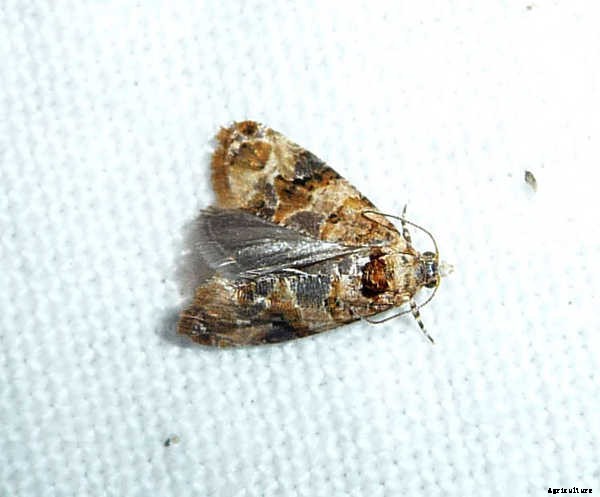
There are a number of pests which prey upon grape vines. When growing grapes, it’s important to try to defend both the plant itself as well as its fruit. Let’s go over the usual problem pests.
Blattläuse in general can wreak havoc on grapevines, although the common garden aphids are more a pest of the fruit than of the vine itself. Aber root aphids of the Phylloxera family are a massive danger to grapevines, especially those used for wine grapes.
Root aphids will cause damage beneath the soil, making it hard to identify what the cause is. Plants lose their vigor, developing curling or withered yellow leaves. Fruits will be small or stunted. It can look very much like a nutrient deficiency.
To treat root aphids, you can use a diluted pyrethrin-based spray like Bonide Pyrethrin Concentrate oder PyGanic to drench the soil along the roots. This should kill off most of the hatched aphids. Retreat again every two weeks to kill off subsequent hatchlings.
Another common pest is Japanische Käfer . These love to devour the leaves and young fruit on your grapes, and when you see one, it indicates that there’s likely eggs and grubs hidden in the soil waiting to hatch.
Neemöl is an effective preventative measure against Japanese beetles. While this does not outright kill the beetles, eating leaves with neem oil on them stops the larvae that hatch out of the eggs from reaching adulthood. Es ist ein langsamer Prozess, but regular spraying will keep them away.
The larvae of the black vine weevil chew tunnels through your vine’s root system, causing severe damage and leaving the plant open to diseases. Adults will chew notches into leaf edges. These nonflying insects cause damage throughout their lifecycle.
Keeping adult weevils at bay can be done by spreading food grade diatomaceous earth over all leaf surfaces and on the soil’s surface. While it needs to be reapplied if it gets wet, it’s a very simple way to deal with a bad problem. Beneficial nematodes will take out soilborne larvae.
Die European grapevine moth can become another major problem. Not only do the larvae of this pest feed on flowers and fruit, but they transmit diseases such as botrytis cinerea. Eigentlich, a multi-year battle was waged in Napa Valley when this pest appeared, ending in 2016.
The larvae of these moths can be destroyed by using bacillus thurigiensis , or BT. Available as both a Pulver oder ein sprühen , this bacteria will poison the moth larvae and they will die off.
Parasitic nematodes are another problem. These carry diseases such as grapevine fanleaf virus, and as they’re microscopic they are hard to locate. These live beneath the soil’s surface and cause root damage to your plants.
Defeating parasitic nematodes can be done in two ways. Beneficial nematodes can be introduced, and they will kill the parasitic ones as well as root aphids and other soilborne insects. Andernfalls, a soil drench of diluted pyrethrins (see above) can be used to kill off all nematodes.
Schließlich, the last pest isn’t a typical pest at all. Vögel will happily eat Japanese beetles, European grapevine moths, and black vine weevils, making them beneficial most of the time. Bedauerlicherweise, they will also devour your fruit when it’s ripe!
Keeping birds at bay as your grapes ripen is usually your best bet. Verwenden bird netting to protect your fruit from bird attack while allowing the birds free access during flowering and early fruiting. This ensures that the birds will eat your pests, but not your produce.

Some diseases which grapes develop can be beneficial in limited amounts. Jedoch, most are dangerous to both the vine and your eventual harvest.
Botrytis cinerea is both good and bad. In limited quantities right before harvest, this fungal grey mold can be used to concentrate the sugars in grapes. An diesem Punkt, it’s often called the “ noble rot “, as it can be beneficial to winemakers. But too much of a good thing can be a problem.
This fungal mold is what also causes fruit to rapidly decay after harvest, and so for raisins and table grapes, prevention is important. Jedoch, it’s tricky to fight. Verwenden von Neemöl as a preventative can help, as can spraying a copper fungicide on visible fungal growth.
I’ve written a lot more about the noble rot and how it can be beneficial in our piece on botrytis cinerea, and I definitely encourage you to go read more about this disease and how to manage or treat it, as well as how the “noble rot” can be of use in grape growing!
Fusarium , one of the primary causes of damping-off, can cause basal rot in grapevines. This is often one of the diseases spread by root aphids, and a couple Fusarium species are common: Fusarium oxysporium , und Fusarium solani .
As grape vines are nearly impossible to move once they’ve become established and there’s no treatment for fusarium, infected plants must be cut out and destroyed . Daher, it’s better to prevent fusarium from taking hold .
Be certain to avoid overly-wet conditions in the soil, as that can promote fungal disease spread. Zusätzlich, consider adding beneficial mycorrhizae and beneficial bacteria to the soil. Our article on fusarium shares more methods of prevention as well!
One of the most common issues when growing grapes is Mehltau . Caused by fungal development on damp leaves, this mildew creates a whitish powder on the surface of leaves and can cause the plant to have difficulties with photosynthesis.
Gott sei Dank, powdery mildew is easy to treat. Regular applications of Neemöl on all leaf surfaces will kill off any mildew spores in evidence and prevent further spread.
Schwarzfäule is a common and potentially disastrous fungal disease of grapes. This condition causes some of the grapes in a bunch to shrivel and become mummy-like, and leaves and shoots will develop brownish lesions.
Zur Zeit, no organic measures are 100% foolproof for eliminating black rot. Jedoch, limited success has been achieved by maintaining dry leaves and stems , good pruning measures , and doing applications of copper fungicide on a weekly or biweekly cycle.
Some inorganic fungicides are available to treat black rot, so if you are comfortable with using chemical inorganic solutions on your fruit and vines, there are a number of types available.
Schließlich, dort ist der grapevine fanleaf virus . Spread by nematodes at the root level, this virus causes yellowing of the leaves and lowers fruit quality. It can be easily transmitted by nematodes between the plants, and there is no way to cure it.
Prevention is the key to this virus. If you find a plant showing signs of grapevine fanleaf disease, remove it entirely and dispose of it. Either do a pyrethrin soil drench or add nützliche Nematoden which attack root-feeding ones. Sterilize your pruning tools between cuts.
Thank you to the Cordi Winery in Live Oak, CA for allowing me to take a number of close-up photos of their Primitivo vines (and for having some delicious wines, too)! Ebenfalls, thank you to Dez Fuhrman for sharing your great photos of vineyards in and around Lodi, CA!
When properly cared for, you can start growing grapes and have fruit for decades to come. Do you grow grapes, and if so, which varieties are your favorites? What do you do with your harvest? Share your vine knowledge and tales in the comment section!